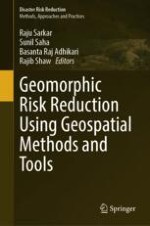2024 | OriginalPaper | Buchkapitel
3. Artificial Neural Network Ensemble with General Linear Model for Modeling the Landslide Susceptibility in Mirik Region of West Bengal, India
verfasst von : Sunil Saha, Anik Saha, Bishnu Roy, Ankit Chaudhary, Raju Sarkar
Erschienen in: Geomorphic Risk Reduction Using Geospatial Methods and Tools
Verlag: Springer Nature Singapore
Aktivieren Sie unsere intelligente Suche, um passende Fachinhalte oder Patente zu finden.
Wählen Sie Textabschnitte aus um mit Künstlicher Intelligenz passenden Patente zu finden. powered by
Markieren Sie Textabschnitte, um KI-gestützt weitere passende Inhalte zu finden. powered by
